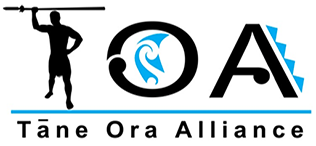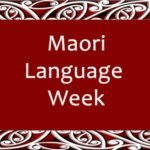This page summarises some of the latest facts and statistics on health and wellbeing for Māori men. Firstly, we take a look at stats related to Te Whare Tapa Whā aspects of health, and then lower down the page those relating to the Five Ways to Wellbeing.
Te Whare Tapa Whā
Physical health
Māori life expectancy has been steadily increasing. Māori males born in 1995 could expect to live to be 67 years of age and by 2010–12 this had increased to 73 years of age.
More than twice as many Māori are living to advanced old age (80+ years) than a decade ago, and the proportion of Māori men living longer has also been growing faster, according to Statistics New Zealand.
In the 2012/13 New Zealand Health Survey, 85.8% of adult Māori men reported that they were in good health, with 17.8% saying they had excellent health, 33.6% very good health and 34.4% good health; while 14.2% were in fair or poor health.
Nearly 90% of Māori who consider they are in excellent health are either satisfied or very satisfied with their lives, and they’re much more likely to feel satisfied than Māori who are in poor health (35%).
In the 2012/13 New Zealand Health Survey, around seven in 10 (70.6%) of Māori men had visited their GP in the last 12 months; however, 29.1% reported that they’d had an unmet need for primary healthcare in the last 12 months, and the figure was around 1.4 times higher than for Māori men than non-Māori men.
- 2% Māori men unable to get an appointment at their usual medical centre within 24 hours
- 3% unmet need for GP services due to cost
- 6% unmet need for after-hours services due to cost
- 7% unfilled prescription due to cost
Also in the 2012/13 New Zealand Health Survey:
- Smoking: Around one third of Māori men were smokers, with 36.4% saying they were current smokers and 33.6% daily smokers.
- Heart disease and risk factors: 11.9% of Māori men were taking medication for high blood pressure and 8.9% for high cholesterol, and 5.2% had diagnosed ischaemic heart disease.
- Diabetes: 7.9% of Māori men had diagnosed diabetes
Whānau health
Leading Māori health expert Professor Sir Mason Durie says that Māori potential for high standards of health and wellbeing have never been greater, and the best prospects lie with whānau as champions for their own health.
In the 2013 Te Kupenga survey, the majority (83%) of Māori adults said their whānau was doing well or extremely well, and most had face-to-face (84%) or other contact (94%) recently with whānau outside their household.
Around a third (34%) of Māori adults wanted more contact with whānau; while 63% said they had about the right amount of contact and just 2% had too much contact.
Most Māori defined their whānau by whakapapa. Almost all Māori (95%) included their parents, siblings, partners and children in their whānau. Two fifths also included their aunts and uncles, cousins, nieces, nephews and in-laws. One in eight Māori (12%) said that their whānau also includes friends or other people.
In the Youth ’12 survey of New Zealand secondary school students, nearly three quarters (74.3%) said that they felt close to their parent/s, and 68.8% reported that they had fun with their whānau often or a lot. Just over half (53.4%) said that they mostly got enough time with their parents.
In the 2010 Quality of Life Survey of residents from eight large New Zealand cities [9], 66% of Māori spontaneously mentioned family as one of the three main components that contributes to their quality of live, a higher proportion than across the whole population (54%). A further 19% of Māori said that friends were amongst the main components of quality of life, and 4% community.
Spiritual health
In the 2013 Te Kupenga survey, two thirds (66%) of Māori adults said that spirituality was an important part of their lives. The figure was higher for women (74%) than men (57%), though, suggesting that men might like to pay more attention to this area of their lives.
In the same survey, 45% of Māori adults said that religion was important in their lives (very, quite, or somewhat important) while 21% said it was a little important and 34% said it was not at all important.
Around 70% of Māori adults feel that it’s important to be involved in Māori culture. Many (62%) have been to their ancestral marae; and many take part in modern cultural activities like watching Māori television (75%) or exploring their whakapapa (60%).
Almost 50% of Māori adults feel connected with their tūrangawaewae (somewhat, strongly or very strongly), and 77% of those who know their ancestral marae think of it as their tūrangawaewae.
See, too, all the statistics under “connect” and “keep learning” about the importance of connecting with culture, language etc.
Mental health
In the 2012/13 New Zealand Health Survey, 16% of Māori adults had been diagnosed with a common mental disorder (depression, bipolar disorder and/or anxiety disorder) at some time in their lives, and 10% had experienced psychological distress in the last four weeks.
The last decade has seen a 33.4% rise in the rate of Māori seeking professional help for mate hinengaro (mental illness) [10], a faster rate than for non-Māori. The latest figures from the Ministry of Health show that in 2010/11, 19,210 Māori men made use of mental health and addiction services (or 5855.5 for every 100,000 Māori men in the population).
The 2013 Disability Survey found that around 8% of Māori men (an estimated 28,000 Māori men) were living with disability caused by psychological and/or psychiatric conditions (i.e. limitations in their daily activities due to long-term emotional, psychological or psychiatric conditions).
Suicide
Provisional figures from the Chief Coroner show that in the year to 30 June 2014, 108 Māori died by suicide (18 deaths per 100,000 Māori) [12]. About one in every five New Zealanders who die by suicide are Māori.
Figures from the Ministry of Health show that in 2011, 80 Māori men died by suicide, a rate of 25.7 deaths per 100,000 Māori male population in 2011.
Please note: The Coroner’s figures are higher than those in the Ministry of Health report. A note at the end of the Coroner’s press release on latest figures states: “The information provided relates to provisional suicide figures and will slightly differ from the Ministry of Health figures. They include active cases before Coroners where intent has yet to be established therefore may eventually be found not to be suicides. In addition Ministry of Health figures are recorded by calendar year.”
Ways to wellbeing
Around eight in 10 Māori adults feel satisfied with their lives, with 55% saying they are ‘satisfied’ and 23% ‘very satisfied’, according to the 2012 New Zealand General Social Survey [4] In the 2010 Quality of Life Survey of eight New Zealand cities, 87% of Māori rated their quality of life as positive, with 63% saying their quality of life was ‘good’ and ‘24% ‘extremely good’; and 88% reported positive emotional wellbeing, with 52% saying they were ‘happy’ and 36% ‘very happy’.
Whakawhanuangatanga (Connect)
Build relationships, relate well socially, communicate
Around 31% of Māori and Pacific people meet socially with friends, relatives or work colleagues regularly (more than once per week), and more Māori and Pacific people feel close to people in their local area than do other New Zealanders.
Māori connect with friends and family often. In the 2012/2013 New Zealand General Social Survey, 91.2% had face to face contact in the past month with family who don’t live with them, and 91.4% with friends.
One quarter of Māori (25.5%) want to have more contact with friends and family who don’t live with them, while 68% feel the amount of contact they have is about right’ and 6.4% say they have ‘too much’ contact.
Around two thirds of Māori (67.4%) never felt lonely in the past four weeks; while 26.8% felt lonely a little or some of the time, and 5.8% felt lonely most or all of the time
In the Sovereign Wellbeing Index study of New Zealanders’ wellbeing, 30.8% of Māori and Pacific people felt close to people in their local area, a higher proportion than for the population overall (25.5%) [14]. The study also showed a steady increase in wellbeing as people connect more often. The average wellbeing score for people who connect several times a week is 46.8 compared with 39.9 for people who connect less than once a month.
In the 2010 Quality of Life Survey of eight New Zealand cities, 65% of Māori felt a sense of community with others in their local neighbourhood, a higher proportion than for all people surveyed (60%).
Tamariki may value spending more time with their fathers. In the Youth ’12 survey, 37.3% of Māori secondary school students said they got enough time with their father most of the time, 38.9% sometimes, and 23.8% hardly ever [16]. Some of most common reasons they didn’t get enough time with their father were that he was at work (70.7%), they did not live with their father (27.3%), he was busy with housework, other children or other family members (23.1%), or he was out (21.8%) (Students could select more than one option).
Connect as it relates to culture and language
According to the 2013 Te Kupenga survey, around two-thirds (64.1%) of Māori adults (63.3% of Māori men) say that it would be easy or very easy to find someone to help them with Māori cultural practices, such as going to a tangi, speaking at a hui, or blessing a taonga.
The majority of Māori (68%) believe that ‘not enough’ Māori language is currently being spoken and that it is was a good thing for Māori to speak te reo at home (95%) [17]. When asked what they personally should do to support the Māori language, 40% said they should learn te reo, 23% that they should speak it more often, and 26% that they should support and encourage kids and others to learn and speak te reo.
Around 55% of Māori adults (50.7% of Māori men) can speak at least some te reo Māori, and 35.5% speak some te reo in the home. Older Māori were more likely to speak te reo well, but between 2001 and 2013 there was a large increase in the proportion of younger Māori speakers (15-44 years of age).
In the 2013 Te Kupenga survey, around nine out of 10 (89%) Māori adults (87.6% of Māori men) knew their iwi, and this was the most common aspect of Māori tribal identity, or pepehā, that Māori knew. Sixty-two percent of Māori adults had been to their ancestral marae and 34% had done so in the last 12 months.
Māori men can help tamariki to connect with, and learn about, their culture. In the Youth ’12 survey, 71.5% of Māori secondary school students were very proud of being Māori, but less than half (45.2%) were satisfied with their knowledge of things Māori. Parents were the most common source of knowledge about Māori culture (68.4%), and other relatives were the second most common source (63.2%).
Some of the most common language and cultural activities that Māori take part in include watching Māori Television (63%); watching a te reo channel (50%); attending ceremonies or events with Māori welcomes and speeches (56%); and vsiting Māori art, culture or historical exhibits (40%).
Koha me te Aroha (Give)
Gift with love
A study of six communities affected by the 2010 and 2011 Canterbury earthquakes highlighted the value of giving to the community [19]. It found that marae were key hubs for recovery support, providing care for Māori and non-Māori, and that cultural practices and values were important in assisting recovery from the disasters, including manākitanga (caring and hospitality) and kotahitanga (the iwi acting in one accord to support the people of Christchurch, regardless of race, culture or ethnic identification).
In the Sovereign Wellbeing Index study of New Zealanders’ wellbeing, three quarters of Māori and Pacific people (75.3%) provided help and support to others often – a significantly higher rate than New Zealanders of other ethnicities [14]. The study also showed that people’s wellbeing increased as they gave more. People who gave “completely” had an average wellbeing score of 46.7, compared with 24.7 for people who do not give any help and support.[1] In this research the international Flourishing Scale was used to provide a single wellbeing score from 8 to 56, based on a person’s self-perceived success in important areas such as relationships, self-esteem, purpose and optimism. http://internal.psychology.illinois.edu/~ediener/FS.html
The 2012/13 New Zealand General Social Survey showed that in the last four weeks, 67.1% of Māori did unpaid work for someone living in another household, and 31.4% did voluntary work for a group or organisation.
Māori who take part in voluntary work are more likely to be more satisfied with their lives. Nearly 87% of Māori who did voluntary work for a group or organisation in the last four weeks were satisfied or very satisfied with their lives, compared with 79% of Māori who didn’t do this kind of work.
In the 2009/10 Time Use Survey, 72% of Māori men had taken part in unpaid work outside their own home in the last four weeks, including 20% who did unpaid work for a non-profit organisation, 27% for any organisation and 69% for another household.
Kia Mataara, Mohiotanga (Take notice)
Alertness, insight, intelligence, knowledge
In the Sovereign Wellbeing Index study of New Zealanders’ wellbeing, 60.1% of Māori and Pacific people said that they often took notice of, and appreciated their surroundings, a significantly higher rather than for New Zealanders of other ethnicities [14]. The study also showed that people’s wellbeing increased as they took notice more, with people who took notice “always” having an average wellbeing score of 48.1, compared with 28.0 for people who “never” took notice.
A recent analysis of 47 clinical trials from around the world found that mindfulness meditation programmes can produce small to moderate improvements in multiple aspects of psychological stress, including anxiety, depression, pain, stress/distress and mental health-related quality of life.
Relatively little research on mindfulness appears to have been done in New Zealand to date. But consistent with overseas research, a study in New Zealanders with a range of chronic physical illnesses found that training in mindfulness-based stress reduction helped to reduce levels of depression, anxiety, stress, and pain/discomfort, and improved physical and social functioning along with mental health, energy, vitality and overall health.
Work on a kaupapa Māori mindfulness based stress programme project is under way by researchers at Eastern Institute of Technology.
Mahi kakamā (Be active)
Be nimble and active
In the 2007/2008 Active New Zealand Survey, Māori had the highest rate of participation in sport (92%) compared with other New Zealand men, and more Māori (53.5%) met national guidelines for physical activity (participating in at least 30 minutes of moderate intensity physical exercise on five or more days of the week) compared with the general population (48.2%).
Similarly, in the 2010 Quality of Life Survey of eight large New Zealand cities, Māori were more likely to have taken part in physical activity on five or more days of the week (57%) compared with the general population (52%).
In the Sovereign Wellbeing Index study of New Zealanders’ wellbeing, 24.4% of Māori and Pacific people exercised regularly, a similar level to European New Zealanders (23.3%) and more than Asian people (18.6%) [14]. The study also showed that people’s wellbeing increased with even small increases in activity level. People who engaged in high levels of exercise had an average wellbeing score of 47.1, compared with 42.8 for people with very low levels of exercise. Even low levels of exercise boosted wellbeing to 45.0.
In this research the international Flourishing Scale was used to provide a single wellbeing score from 8 to 56, based on a person’s self-perceived success in important areas such as relationships, self-esteem, purpose and optimism.
References available upon request to the






